Lograr un bordado impecable puede resultar complicado, pero unos simples ajustes pueden marcar la diferencia. Centrándose en factores específicos, Puedes mejorar la calidad del bordado y producir resultados de nivel profesional..
En este articulo, Exploraremos los factores clave que contribuyen a un mejor bordado., desde la elección adecuada de materiales hasta el dominio de la configuración de su máquina, asegurando que sus proyectos resulten hermosos en todo momento.

12 Factores importantes que mejoran la calidad del bordado
Factores para mejorar la calidad del bordado
Mejorando la calidad de bordado a maquina Implica prestar atención a varios factores clave que pueden influir en gran medida en el resultado final..
- Nitidez de la aguja
- Calidad del hilo
- Tensión del hilo superior
- Bajar la tensión del hilo
- Grosor del papel soporte
- Calidad de la máquina
- Tensión de encuadre
- Cumplimiento de las instrucciones
- Calidad de la tela
- Uso de tecnología avanzada
- Tamaño de aro adecuado
- Técnica de eliminación del estabilizador
Ahora, let’;Echemos un vistazo a cómo cada uno de estos factores ayuda a mejorar la calidad de su bordado..
1. Nitidez de la aguja
Una aguja afilada es fundamental para realizar costuras limpias y precisas., Y es uno de los factores clave para mejorar la calidad del bordado a máquina.. Las agujas desafiladas pueden provocar puntadas deshilachadas y desiguales., conduciendo a un mal final. Cambiar periódicamente las agujas según el tipo de tejido que se utilice garantiza un rendimiento óptimo.
También es importante utilizar el tamaño de aguja correcto para la combinación de hilo y tela.. Por ejemplo, se necesita una aguja más grande para hilos y telas más gruesos, mientras que una aguja más pequeña es adecuada para materiales más finos.
2. Calidad del hilo
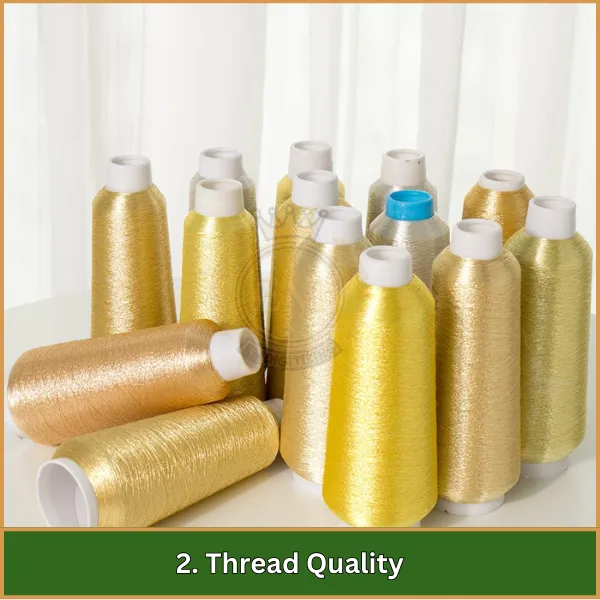
Los hilos de alta calidad son esenciales para la durabilidad y la apariencia.. Deberían ser fuertes, no destiñe, y adecuado para el tejido específico. Los hilos de mala calidad pueden romperse fácilmente y es posible que no mantengan su color con el tiempo., afectando el aspecto general del bordado.
Usar el tipo de hilo apropiado para la tela es crucial para mejorar la calidad del bordado.. Por ejemplo, Los hilos de poliéster son adecuados para la mayoría de los tejidos., mientras que los hilos de rayón proporcionan un acabado brillante y se utilizan a menudo para materiales delicados..
3. Tensión del hilo superior
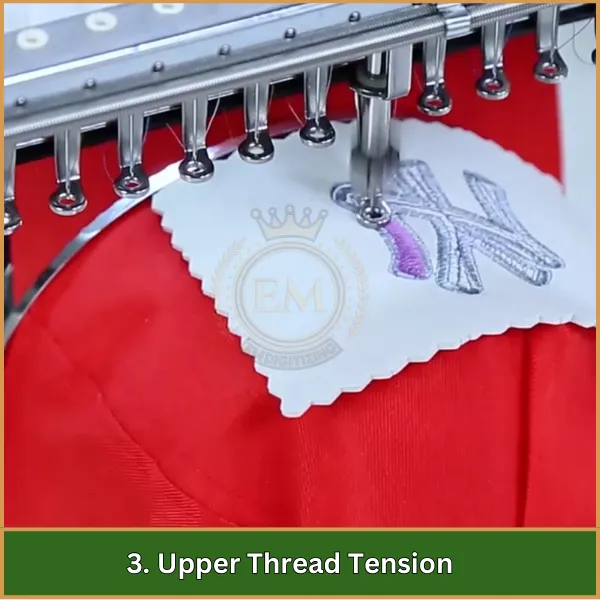
La tensión adecuada del hilo superior es vital para una costura equilibrada. Si la tensión es demasiado apretada, el hilo puede romperse; if it’;está demasiado flojo, los puntos pueden parecer descuidados. Ajustar la tensión según la tela y el tipo de hilo ayuda a lograr un acabado suave..
La tensión debe ser lo suficientemente apretada para evitar bucles en la parte inferior de la tela y al mismo tiempo permitir que el hilo se mueva libremente a través de la aguja..
4. Bajar la tensión del hilo
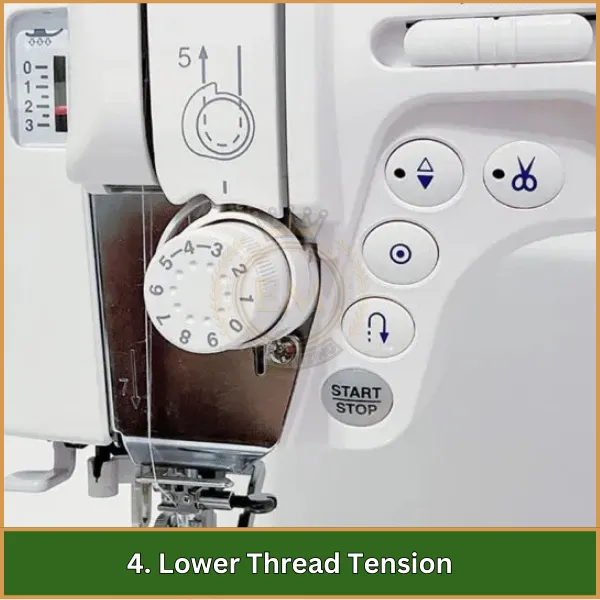
Similar a la tensión superior, La tensión del hilo inferior debe ajustarse correctamente para garantizar una costura uniforme.. Un desequilibrio puede provocar problemas como que los hilos se amontonen o que las puntadas se suelten en la parte inferior de la tela..
Ajustar ambas tensiones es clave para mejorar la calidad del bordado.. La tensión del hilo inferior debe ser ligeramente más apretada que la tensión del hilo superior para mantener una formación de puntada consistente..
5. Grosor del papel soporte
El material de respaldo brinda soporte a la tela durante el bordado.. Elegir el grosor correcto evita la distorsión y garantiza que las puntadas mantengan su forma.. Un respaldo demasiado delgado puede provocar arrugas., mientras que un respaldo demasiado grueso puede ser visible a través de la tela.
También se debe considerar el tipo de material de respaldo., ya que algunos son más adecuados para tejidos específicos. Por ejemplo, el respaldo recortado es ideal para telas de punto, mientras que el respaldo desprendible funciona bien para materiales tejidos.
6. Calidad de la máquina
La calidad de la máquina de bordar juega un papel importante en el producto final.. Las máquinas de alta gama ofrecen mayor precisión, más características, y calidad de puntada mejorada.
Invertir en una máquina confiable puede mejorar la experiencia general de bordado. Mantenimiento regular, como limpiar y engrasar la máquina, ayuda a garantizar un rendimiento óptimo y prolonga su vida útil.
7. Tensión de encuadre
Enmarcar adecuadamente la tela garantiza que permanezca tensa durante el proceso de bordado.. La tela suelta puede provocar costuras desiguales y distorsiones.. Usar el aro correcto y asegurarse de que la tela esté sujeta de forma segura puede evitar estos problemas..
La tela debe estirarse lo suficiente para evitar que se hunda, pero no tanto como para distorsionar el diseño o dañar el material..
8. Cumplimiento de las instrucciones
Following the manufacturer’;Las instrucciones tanto para la máquina como para los materiales son cruciales.. Esto incluye ajustes de tensión., velocidad, y tipo de aguja e hilo. Cumplir con estas pautas ayuda a evitar errores comunes que pueden comprometer la calidad.. Experimentar con diferentes configuraciones y técnicas también puede ayudar a mejorar las habilidades de bordado y producir mejores resultados..
9. Calidad de la tela
El tipo y la calidad del tejido mejoran significativamente la calidad del bordado.. Las telas demasiado elásticas o demasiado gruesas pueden causar complicaciones.. Elegir la tela adecuada que complemente el diseño y el tipo de hilo es esencial para lograr una apariencia elegante.. Prelavar la tela para eliminar cualquier tamaño o acabado también puede ayudar a mejorar la calidad de la puntada y evitar que se encoja después del bordado..
10. Uso de tecnología avanzada
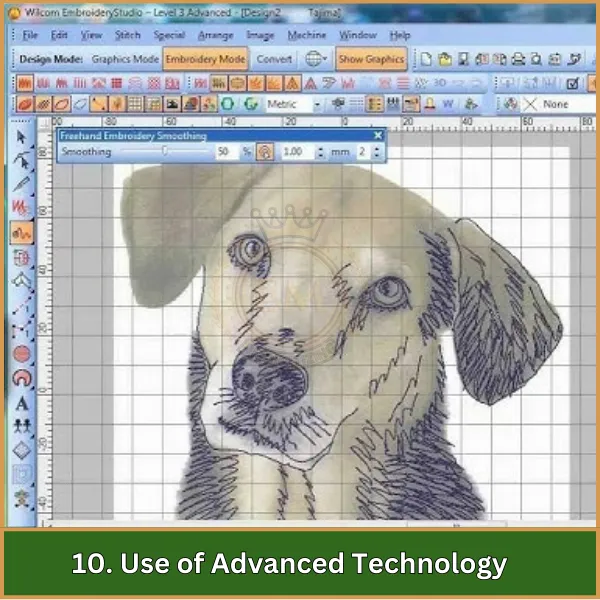
Incorporando tecnología como software de digitalización y las máquinas automatizadas pueden mejorar cómo mejorar la calidad de la imagen del bordado a máquina. Las funciones avanzadas permiten diseños más complejos y costuras precisas.. Mantenerse actualizado con la última tecnología puede mejorar la eficiencia y la calidad de la producción..
El software de digitalización permite la creación de diseños complejos que se pueden transferir fácilmente a la máquina de bordar., mientras que las máquinas automatizadas garantizan una calidad y velocidad de puntada constantes.
11. Tamaño de aro adecuado
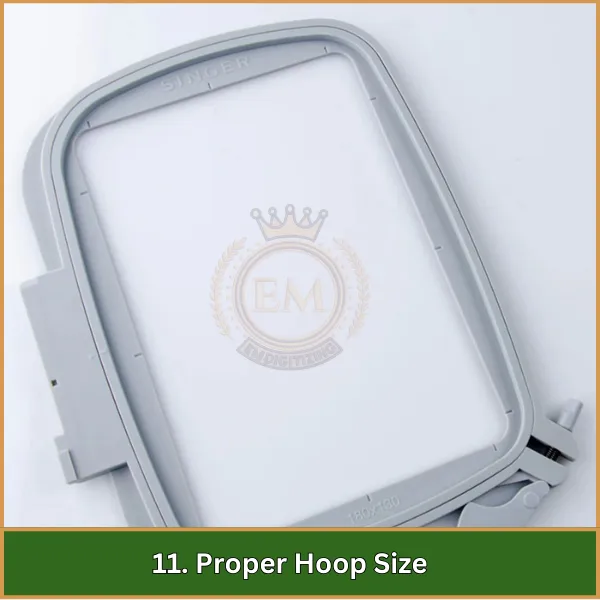
Usar el tamaño de aro correcto para su tela y diseño es crucial. Un aro demasiado grande puede hacer que la tela se mueva durante el proceso de bordado., lo que lleva a desalineación o distorsión en el diseño. Un aro correctamente ajustado garantiza que la tela permanezca segura en su lugar., lo que resulta en costuras más precisas y consistentes.
12. Técnica de eliminación del estabilizador
La forma en que retira el estabilizador después del bordado puede afectar la apariencia final del diseño.. Una extracción inadecuada puede hacer que la tela se estire o se distorsione.. It’;s essential to follow the manufacturer’;s instrucciones para retirar el estabilizador, ya sea cortando, rasgando, o disolverse—para mantener la integridad tanto del tela para el bordado.
Envolver
Para mejorar verdaderamente la calidad del bordado, tener un diseño bien digitalizado es esencial. Incluso con las mejores técnicas y equipos., Una mala digitalización puede frenar tus proyectos..
Antes de terminar, si necesitas servicios de digitalización, no dude en contactarnos. Ofrecemos servicios de digitalización asequibles con resultados de calidad garantizados. We’;re ofreciendo 50% a nuevos clientes, so grab this amazing deal before it’;es demasiado tarde!
Gracias por leer este artículo. Si te gustó, por favor compártelo. You’;Estás en camino de convertirte en un profesional del bordado.!
preguntas frecuentes
Digitalización en bordado es el proceso de convertir una obra de arte en un archivo digital que una máquina de bordar puede leer. Una buena digitalización garantiza una fluidez, costura precisa, lo que mejora enormemente la calidad del bordado final.
El hilo de alta calidad reduce las posibilidades de romperse y deshilacharse., lo que lleva a un bordado más suave y vibrante. La mala calidad del hilo puede provocar costuras desiguales y un acabado menos profesional..
Un estabilizador mantiene la tela estable durante el bordado., evitando que se estire o se mueva. Esto asegura una limpieza, precise stitching and helps maintain the design’;s forma y calidad.
Los diseños complejos con detalles intrincados pueden ser difíciles de bordar y pueden requerir técnicas más avanzadas y una mejor digitalización.. Los diseños más simples son generalmente más fáciles de ejecutar y con mayor calidad..
